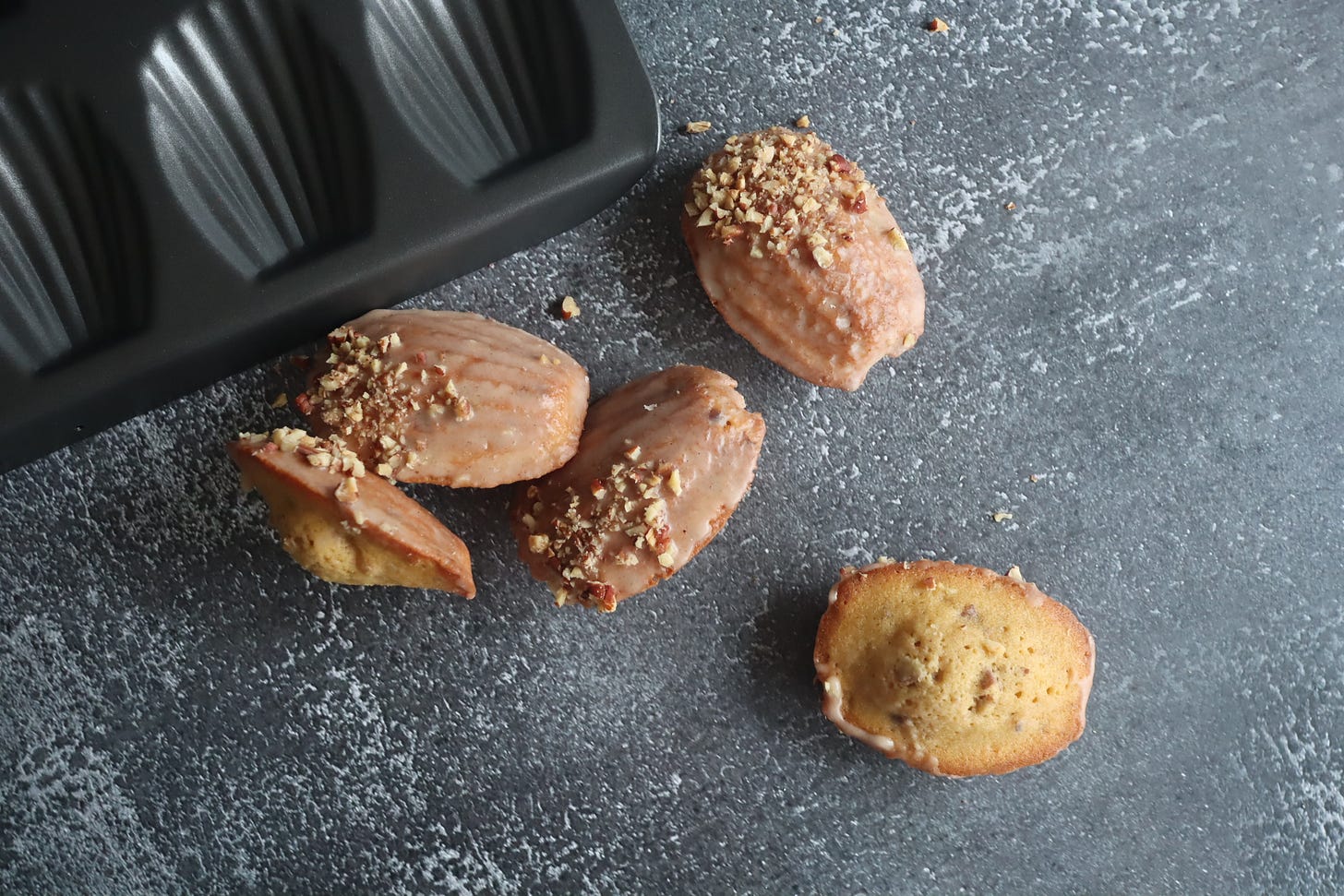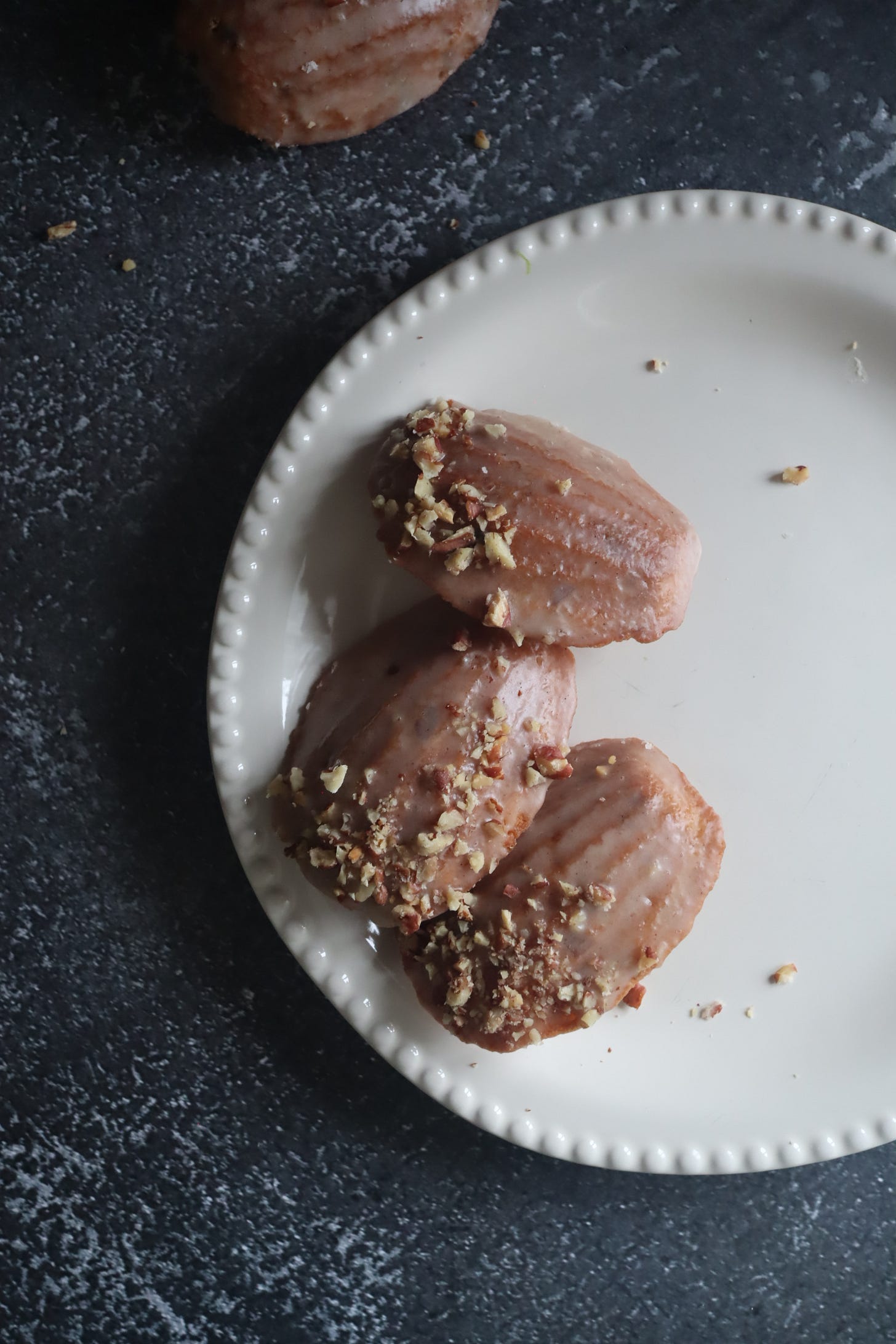What I’m reading: Saltwater, by Jessica Andrews. This is a thoroughly enjoyable coming of age novel set in Ireland and the UK. It jumps back and forth temporally, which is a bit discombobulating (and some of the imagery is a little clichéd), but nevertheless an enchanting read.
“Everything about her was silver; her voice as she sang along to the radio in the morning, the shiny fish scales caught on her tabard at the end of the day and the hole that she left in our lives when she died, edged like a fifty-pence piece”
What I’m listening to: I haven’t been able to get this song out of my head for at least a week - and now it will be stuck in yours too! Sorry :)
What I’m eating: the feta honey swirl from Dusty Knuckle. It doesn’t get any better than this, folks (below)
I spent another magical night in Paris this week! I have somehow ended up in Paris three times in the last six months - partly thanks to the Eurostar (I’m a big fan) - but this time expressly to see CMAT in concert on her European tour. It was a brilliant gig, and I was also able to fit in pizza at Oobatz, pastries at Ten Belles and Du Pain et des Idées and a trip to my favourite shop in the world, E. Dehillerin (see below).
Since I spent my days off this week gallivanting around Paris, I didn’t have time to develop a recipe - but I did spend quite a lot of time thinking about madeleines, so I thought it might be fun to re-visit this recipe test from a couple of years ago, including the recipe for maple and pecan madeleines at the end. Enjoy the deep dive x
For this recipe test, I made 6 different recipes in order to determine which factors contribute to the perfect madeleine: Michel Roux, St John, Cedric Grolet (via Dorie Greenspan), Felicity Cloake, Yotam Ottolenghi and Edd Kimber (links at the bottom). I’ve broken down my findings into Ingredients, Mixing Method, Chilling and Baking, and finally I’ve taken everything I’ve learned about madeleines to come up with my own recipe, which you’ll find below.
Ingredients
The essential ingredients in a madeleine are melted butter, sugar, flour, raising agent and eggs. Several of the recipes went the extra mile and used brown butter (St John, Grolet, Cloake), which I strongly (obviously) back . Most recipes used plain flour and baking powder - except St John, which used self-raising flour, and didn’t seem to rise quite as dramatically - I think that there is too much variability in the amount of raising agent in self-raising flour, and you are therefore better off using plain flour and having complete control over raising agent. Roux, Grolet and Kimber all flavour with lemon (zest or juice), while St John, Grolet, Cloake and Ottolenghi all include honey, adding a lovely floral note. Alternative flavours were orange blossom water (Cloake), saffron (Ottolenghi) and Earl Grey (Grolet), all of which were delicious, but perhaps not strictly traditional.
Mixing method
There are several options for mixing: Roux, Grolet and Kimber lightly whisk the eggs and sugar, before incorporating the rest of the ingredients (Kimber also rubs lemon zest into the sugar first, to enhance the citrus flavour). St John and Cloake whisk more vigorously, for several minutes, until the eggs and sugar have increased in volume, before incorporating the rest of the ingredients. Ottolenghi uses a food processor. Whisking the eggs and sugar vigorously at the beginning resulted in by far the lightest, softest texture.
To chill or not to chill?
All recipes except Roux recommend that the batter be chilled for at least an hour, or overnight. It seems that this is the best way to achieve the distinctive “hump” on the madeleine: by keeping the batter cold until the last minute, and perhaps chilling the tin itself, then placing both into a hot oven, the heat takes longer to reach the centre of the madeleine, so the batter is pushed upwards.
Baking
Interestingly, all recipes recommended that the tins be greased with butter and dusted with flour before the madeleine mixture is added. I found that the flour was not entirely absorbed by the batter, and some dry parts remained, ruining the fluted look of the underside of the madeleine. My solution was to use a neutral spray oil (such as sunflower or canola), which will ensure the madeleine does not stick to the tin, but does not affect the appearance of the shell. The madeleines should be baked in a relatively hot oven (190C) in order to produce the “hump”, and avoid drying out the interior of the cake. After baking, Ottolenghi glazed his with honey, before adding chopped pistachios, and Kimber glazed his with a simple lemon icing. The glaze definitely added a lot in terms of texture and flavour, but would potentially get in the way if you were planning to dunk your madeleine in a hot drink.
recipe: maple pecan madeleines
Keep reading with a 7-day free trial
Subscribe to Tastebuds to keep reading this post and get 7 days of free access to the full post archives.








